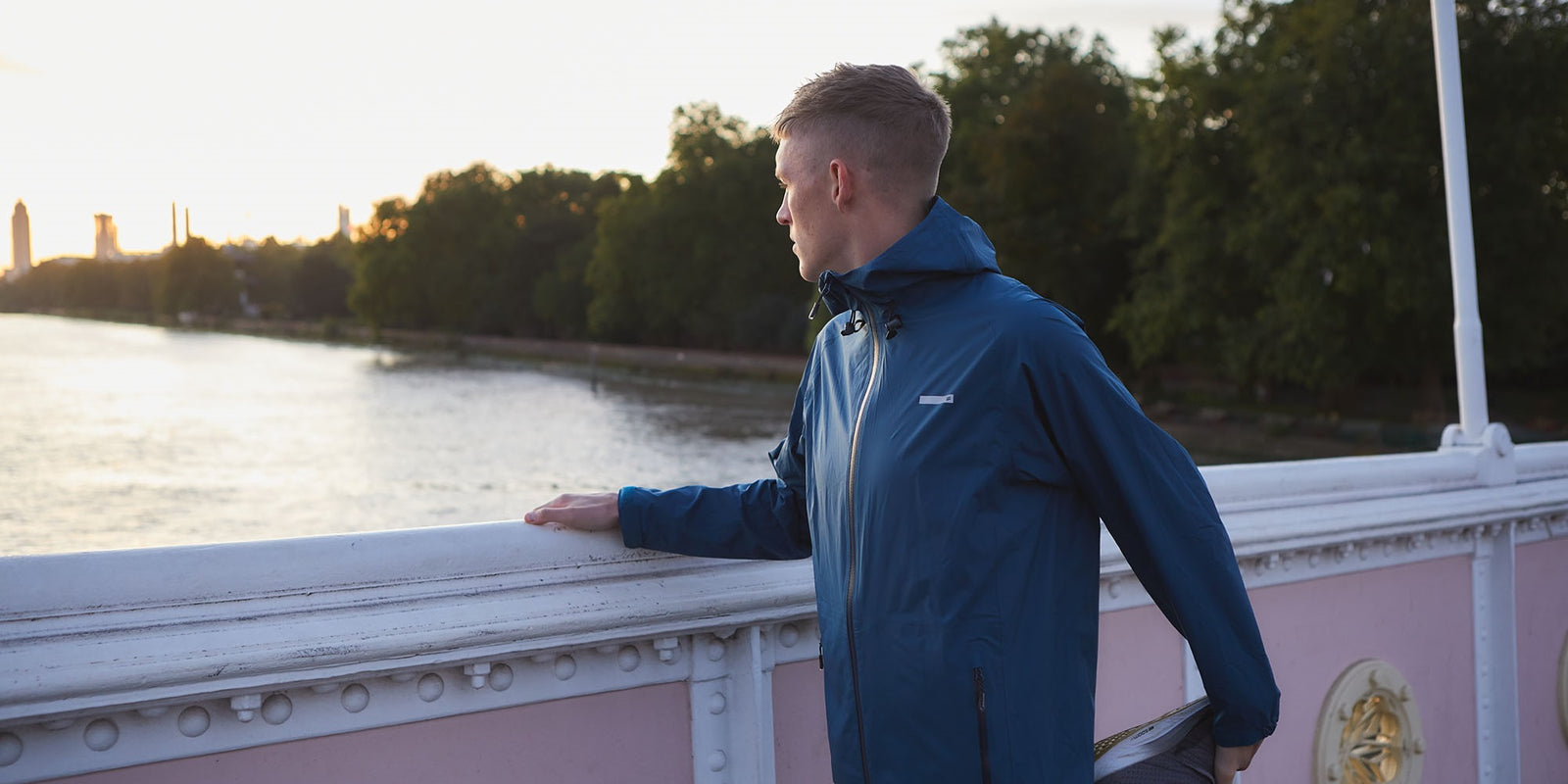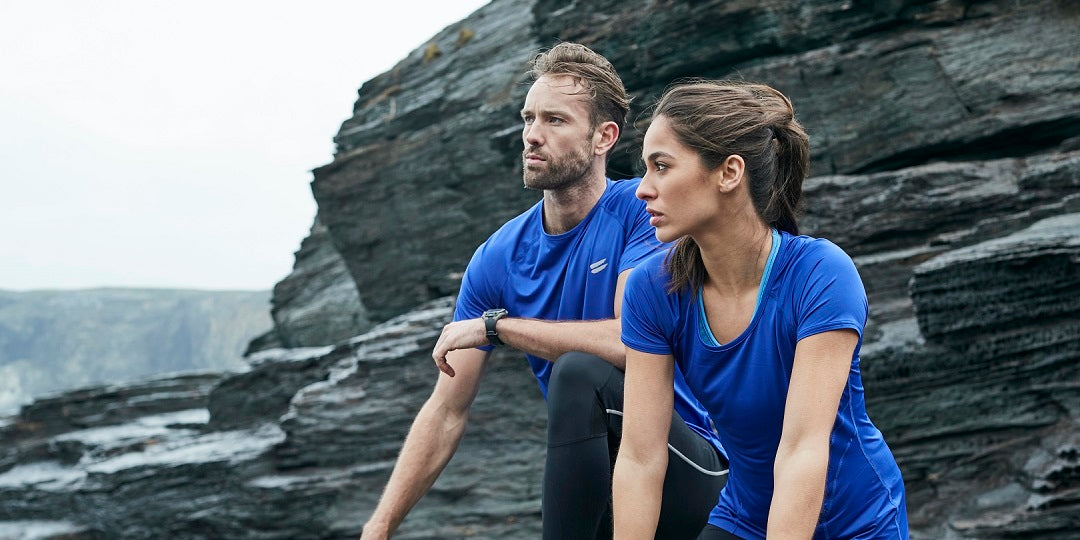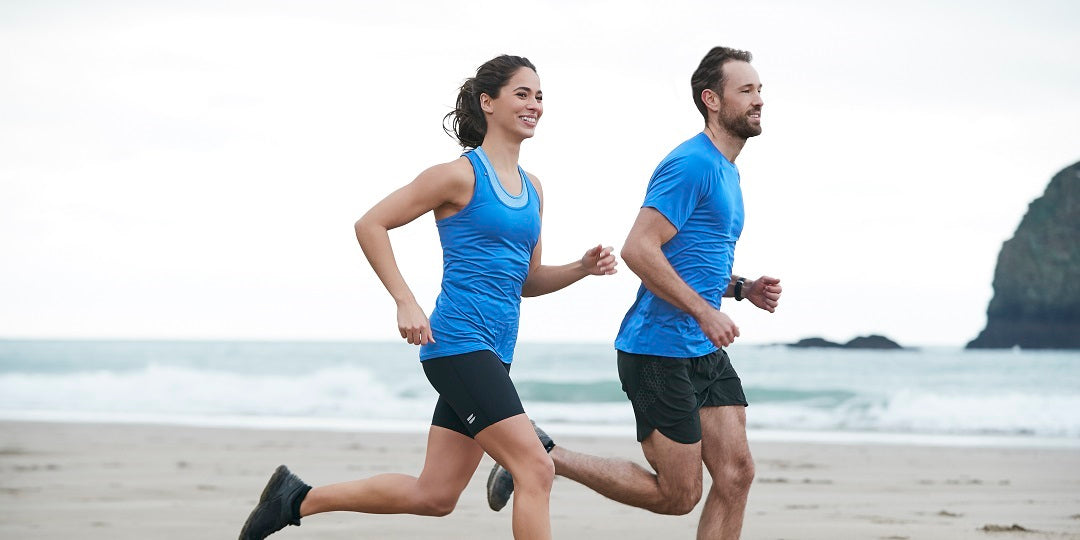The image of hundreds of triathletes piling into the water in a frenzy of splashing at the start of a race is one we are all familiar with. If you are new to racing, this can be a very daunting prospect, but don’t be put off. Follow our guide to get yourself standing on that start line feeling confident and raring to go.

Irrespective of distance, triathlons fall into two main categories, those with a swim in a pool, and those in open water. The change in dynamics of the event because of this small detail should not be over looked.
Those who haven’t done an open water, mass start, BIG triathlon may be wondering what the difference is? Well, here are a few key ones:
- Hundreds, maybe even thousands will be entering the water at the same time, as opposed to maybe 10-15 in a lane.
- There are no lane ropes to guide people. Some athletes take extreme lines and therefore there is more contact with other swimmers, meaning you need to navigate not just to the buoys, but around fellow racers.
- Transition can be a very busy place if you are a middle of the road swimmer.
- On the roads there are likely to be many more riders around, some going faster than you and some slower.
- By the run this has generally settled down but T2 can still be larger and busy at points.
Approaching open-water swimming could be a whole article on its own, however here we are going to deal specifically with the dynamics of racing in a group. So a few key pointers are:-
Swim
Be realistic about your level. Try to start around people you think are at your standard. This will make the swim smoother as you are all going to be going at roughly the same pace.
- If you find yourself out of position, don’t panic!
- Get into your swim, keep sighting and swim around people. This is probably a long race and hustling too much too early will not help as it will increase anxiety and probably your effort, without being any faster.
- Avoid contact; if someone is intent on swimming in your space, don’t argue, fight or ever STOP! Try to move left or right, slow slightly or speed up. DON’T ever stop unless you are in trouble, others will just plough into you.
- Get on a slightly faster swimmer’s feet and follow them. About 10-20cm behind their feet is ideal; this will reduce the energy cost of your swimming, or enable you to go faster for your effort.
In T1 (Transition 1)
Ensure you have planned the route to your bike. There is nothing worse than running around looking for your spot; this increases anxiety, adrenaline and will inevitably lead to over exertion and you get a double whammy on your time (time lost looking for the bike and over exertion)
Same on the way out: know the fastest way to the exit.
If the exit of T2 is tight it can be a bottleneck with people trying to get on bikes. Run around them and mount in clear space. Keep calm and efficient.
On the bike
Drafting is illegal, but know the rules. Different events have different rules. Being penalised for drafting, especially if you thought you were not is very frustrating. and can ruin your rhythm. It is very easy to get busted in big races, with lots of people around.
Sometimes the rules are not practical, particularly when leaving T1 en-masse and on small roads, so don’t panic about it, just try to be fair and make an effort to avoid obviously drafting and common sense should take over.
- Whilst getting too close to another competitor and drafting is illegal, as long as you stay far enough apart you can gain from using others as pacers to help push you on, but know your limits. Again this will help with your time but also keep you focussed.
- Be alert and look ahead. Others may be erratic and not be as aware as you - wobbling around, changing lines without looking and in the worst case causing accidents.
- The same goes for traffic. Most events are not on completely closed roads and even if they are there are still cars about, so remember not to get stuck in tunnel vision!
T2 (Transition 2)
If there are lots of people around when it comes to dismounting you need to be very alert and in control. There are many ways of getting off, and some people are better at this than others. Most crashes occur around this point, usually not serious but a few bumps as people stop suddenly.
- Maintain a straight line and remember this is not the time to try anything new - even if the person you are following does a running dismount that looks easy and fast! There are only a handful of seconds to be gained here; being safe and controlled will be YOUR fastest way.
- As with T1 know where you are parking your bike, and the best route through to it.
- Stay calm and ensure you don’t get flustered by others going quicker or slower. Smooth, efficient transitions are the best.
Run
Group running is great, it keeps you motivated at a time when you are probably getting tired. BUT the group must be going at your pace. If you try to run too hard too early because you have got caught up with the fun of being in a run pack, you will eventually pay.

If it is windy there is definite advantage to being in a group and being sheltered. It reduces your effort and saves energy for later.
Final Thoughts
Big races have a great atmosphere, usually because there are loads of people about. That energy can be a great motivator and push you on. It also means awareness and confidence are key to keep you safe and enjoying the experience, and most important going FAST!
The Intelligent Triathlon Training website aims to give you all the knowledge and understanding you need to make your triathlon training effective and your racing successful.
It is run by husband and wife team Rhona and Mark Pearce. Both have undergraduate and postgraduate degrees in sports physiology, and 12+ years of working with triathletes. Mark is coach for the British Triathlon Olympic Development Squad which includes Lucy Hall, 2012 Olympian. Rhona is a sports scientist providing physiology testing and support to triathletes of all levels.






Ratnesh
August 31, 2016
Incidentally I will be participating in my first triathlon on 25 September
Useful information